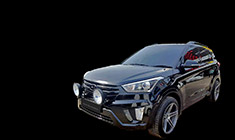News
Motorcycle airbags: What are they & how do they work?
A motorcycle airbag is a type of gear worn by the rider or the pillion which gets deployed in case of a crash and absorbs most of the impact energy.
BHPian deerhunter recently shared this with other enthusiasts.
Motorcycle airbags
This post is about airbag systems worn as part of the riding gear, and not about the airbags installed on motorcycles like the Gold wing. Airbag systems for track use are also beyond the scope of this post. All prices are current market prices when importing into India and not the MRP/RRP. All images are from the internet except that of Helite e-turtle 2, which is mine.
What are they?
As the name suggests, a motorcycle airbag is a type of gear worn by the rider or the pillion which gets deployed in case of a crash and absorbs most of the impact energy.
Airbag types
Based on the mechanism of deployment, airbag systems can be mechanical or electronic.
Mechanical system works through a tether which the rider has to attach to the bike. In case of a crash and separation of the rider from the bike, the tether gets pulled and a spring loaded nail pierces the compressed gas cartridge causing deployment of the airbag.
Pros
- No electronics and thus no charging.
- Higher perceived reliability.
- Cheaper than the electronic systems.
- Can be self-serviced and cartridges can be self-replaced after a crash.
Cons
- Slower reaction time and inflation time. Even the fastest mechanical system is twice as slow compared to the slowest electronic system.
- Deployment depends on the length of the tether. The more the length, the more freedom of movement but also slower deployment.
- May not get deployed in certain types of crashes where there is not enough separation of the rider and the bike. For eg: low side crash.
- Accidental deployments, though rare, can still occur. Require about 30Kg of pull on the tether to cause deployment.
- Have to remember to attach the tether every time.
The most commonly available mechanical systems are:
1. Hit Air
- Very popular and highly reliable system.
- Standalone vests as well as integrated airbag jackets available.
- Good coverage of the thorax, spine and the neck.
- Price for the vest Rs. 60000 including shipping and duties.
Hit Air vest.

2. Helite
- Again very popular and highly reliable.
- Vests, integrated jackets, integrated backpacks as well as airbag jeans available.
- Fastest deployment of all the available mechanical systems.
- The best coverage of all the mechanical systems.
- Price for the vest Rs 60000 including shipping and duties.
Helite turtle 2

3. Spidi
- Good coverage
- Much slower deployment, especially the neck and the spine areas.
- Price Rs 60000 for the vest including shipping and duties.
Spidi vest

Slow deployment of the Spidi vest, especially the neck support. (video)
4. Motoairbag
- Unique thing about this vest is the presence of an inertia reel on the tether (much like a car’s seat belt). Thus providing good freedom of movement as well as faster deployment times.
- Cheaper than the others with a price of Rs 45000 including shipping and duties.
Motoairbag vest. Note the inertia reel.

There are various other less popular mechanical systems in the market, mostly Chinese, but deployment times are unusably slow. Some of the aliexpress ones can be had for under 10000 rupees.
Note the slow deployment of the aliexpress airbag. (video)
Even our very own Axor has one prototype under development, but the deployment time is comically slow. (Video of Axor vest deployment). It looks more like a rebranded generic ali express vest.
Axor vest

Continue reading BHPian Deerhunter's review on motorcycle airbags for more insights and information.


















